Dynamic Tensile Strength of Dry and Saturated Hard Coal under Impact Loading
Abstract
1. Introduction
2. Sample Preparation and Test Process
2.1. Coal Sample Production
2.2. Test Equipment and Principle
2.3. Experimental Process and Data Processing
3. Experimental Results and Analysis
3.1. Effect of Loading Rate on Dynamic Tensile Strength
3.2. Specimen Rupture Process and Fracture Model Analysis
3.3. Debris Distribution Characteristics
4. Conclusions
Author Contributions
Funding
Acknowledgments
Conflicts of Interest
Appendix A
| Type | No. | Loading Rate/(GPa/s) | Tensile Strength/(MPa) | Type | No. | Loading Rate/(GPa/s) | Tensile Strength/(MPa) |
|---|---|---|---|---|---|---|---|
| Dry | 1 | 228.7 | 18.5 | Saturated | 1 | 272.4 | 22.1 |
| 2 | 230.7 | 20.5 | 2 | 304.8 | 20.3 | ||
| 3 | 250.2 | 21.9 | 3 | 346.7 | 25.7 | ||
| 4 | 274.0 | 20.9 | 4 | 358.8 | 22.1 | ||
| 5 | 307.4 | 25.3 | 5 | 371.7 | 22.1 | ||
| 6 | 326.1 | 24.1 | 6 | 376.2 | 23.5 | ||
| 7 | 341.3 | 24.9 | 7 | 445.3 | 26.4 | ||
| 8 | 356.5 | 27.9 | 8 | 536.7 | 27.7 | ||
| 9 | 380.5 | 27.1 | 9 | 547.5 | 27.4 | ||
| 10 | 423.6 | 28.7 | 10 | 576.5 | 29.6 | ||
| 11 | 447.8 | 30.1 | 11 | 638.9 | 29.3 | ||
| 12 | 477.2 | 32.1 | 12 | 706.2 | 28.4 | ||
| 13 | 482.5 | 29.6 | 13 | 786 | 32.0 | ||
| 14 | 489.1 | 30.7 | 14 | 916.8 | 35.1 | ||
| 15 | 524.0 | 32.6 |
References
- He, X.; Dou, L.; Mu, Z.; Gong, S.; Cao, A.; He, J. Continuous monitoring and warning theory and technology of rock burst dynamic disaster of coal. J. China Coal Soc. 2014, 39, 1485–1491. [Google Scholar] [CrossRef]
- Zhang, J.; Jiang, F.; Yang, J.; Bai, W.; Zhang, L. Rockburst mechanism in soft coal seam within deep coal mines. Int. J. Min. Sci. Tech. 2017, 27, 551–556. [Google Scholar] [CrossRef]
- Lu, C.; Dou, L.; Liu, H.; Liu, H.; Liu, B.; Du, B. Case study on microseismic effect of coal and gas outburst process. Int. J. Rock Mech. Min. Sci. 2012, 53, 101–110. [Google Scholar] [CrossRef]
- Gu, H.; Tao, M.; Li, X.; Li, Q.; Cao, W.; Wang, F. Dynamic response and failure mechanism of fractured coal under different soaking times. Theor. Appl. Fract. Mech. 2018, 98, 112–122. [Google Scholar] [CrossRef]
- Perera, M.S.A.; Ranjith, P.G.; Peter, M. Effects of saturation medium and pressure on strength parameters valley brown coal: Carbon dioxide, water and nitrogen saturations. Energy 2011, 36, 6941–6947. [Google Scholar] [CrossRef]
- Pan, Z.; Connell, L.D.; Michael, C.; Connelly, L. Effects of matrix moisture on gas diffusion and flow in coal. Fuel 2010, 89, 3207–3217. [Google Scholar] [CrossRef]
- Yao, Q.L.; Li, X.H.; Zhou, J.; Ju, M.; Chong, Z.; Zhao, B. Experimental study of strength characteristics of coal specimens after water intrusion. Arab. J. Geosci. 2015, 8, 6779–6789. [Google Scholar] [CrossRef]
- Dai, F.; Huang, S.; Xia, K.; Tan, Z. Some fundamental issues in dynamic compression and tension tests of rocks using split Hopkinson pressure bar. Rock Mech. Rock Eng. 2010, 43, 657–666. [Google Scholar] [CrossRef]
- Zhao, J.; Li, H.; Wu, M.; Li, T. Dynamic uniaxial compression tests on a granite. Int. J. Rock Mech. Min. Sci. 1999, 36, 273–277. [Google Scholar] [CrossRef]
- Wang, Q.; Li, W.; Xie, H. Dynamic split tensile test of flattened Brazilian disc of rock with SHPB setup. Mech. Mater. 2009, 41, 252–260. [Google Scholar] [CrossRef]
- Huang, S.; Xia, K.; Yan, F.; Feng, X. An experimental study of the rate dependence of tensile strength softening of Longyou sandstone. Rock Mech. Rock Eng. 2010, 43, 677–683. [Google Scholar] [CrossRef]
- Lu, Y.; Wang, L. Effect of water and temperature on short-term and creep mechanical behaviors of coal measures mudstone. Environ. Earth Sci. 2017, 76, 597. [Google Scholar] [CrossRef]
- Xia, K.; Huang, S.; Jha, A.K. Dynamic tensile test of coal, shale and sandstone using split Hopkinson pressure bar: A tool for blast and impact assessment. Int. J. Geotech. Earthq. Eng. 2010, 1, 24–37. [Google Scholar] [CrossRef]
- Lambert, D.E.; Ross, C.A. Strain rate effects on dynamic fracture and strength. Int. J. Impact Eng. 2000, 24, 985–998. [Google Scholar] [CrossRef]
- Hogan, J.D.; Spray, J.G.; Rogers, R.J.; Boonsue, S.; Vincent, G.; Schneider, M. Micro-scale energy dissipation mechanisms during dynamic fracture in natural polyphase ceramic blocks. Int. J. Impact Eng. 2011, 38, 931–939. [Google Scholar] [CrossRef]
- Shan, R.; Gao, W.; Cheng, X.; Liu, T. Determining dynamic fracture toughness of anthracite by using a short—Rod specimen. Explos. Shock Waves 2008, 28, 455–461. [Google Scholar]
- Zhao, Y.; Liu, S.; Jiang, Y.; Wang, K.; Huang, Y. Dynamic Tensile Strength of Coal under Dry and Saturated Conditions. Rock Mech. Rock Eng. 2016, 49, 1709–1720. [Google Scholar] [CrossRef]
- Zhou, Y.; Xia, K.; Li, X.; Li, H.B.; Ma, G.W.; Zhao, J.; Zhou, Z.L.; Dai, F. Suggested methods for determining the dynamic strength parameters and mode-I fracture toughness of rock materials. Int. J. Rock Mech. Min. Sci. 2012, 49, 35–44. [Google Scholar] [CrossRef]
- Frew, D.J.; Forrestal, M.J.; Chen, W. A split Hopkinson pressure bar technique to determine compressive stress-strain data for rock materials. Exp. Mech. 2001, 41, 40–46. [Google Scholar] [CrossRef]
- Frew, D.J.; Forrestal, M.J.; Chen, W. Pulse-shaping techniques for testing brittle materials with a split Hopkinson pressure bar. Exp. Mech. 2002, 42, 93–106. [Google Scholar] [CrossRef]
- Zhang, Q.B.; Zhao, J. A review of dynamic experimental techniques and mechanical behavior of rock materials. Rock Mech. Rock Eng. 2014, 47, 1411–1478. [Google Scholar] [CrossRef]
- Chen, R.; Xia, K.; Dai, F.; Lu, F.; Luo, S.N. Determination of dynamic fracture parameters using a semi-circular bend technique in split Hopkinson pressure bar testing. Eng. Fract. Mech. 2009, 76, 1268–1276. [Google Scholar] [CrossRef]
- Wu, S.; Chen, X.; Zhou, J. Influence of strain rate and water content on mechanical behavior of dam concrete. Constr. Build. Mater. 2012, 36, 448–457. [Google Scholar] [CrossRef]
- Wu, S.F.; Zhang, Q.C.; Li, S.L.; Chen, B.; Liu, D. Impact mechanical characteristics and damage evolution model of granite. J. China Coal Soc. 2016, 41, 2756–2763. [Google Scholar] [CrossRef]
- Li, H.B.; Li, J.C.; Liu, B.; Li, J.; Li, S.; Xia, X. Direct Tension Test for Rock Material Under Different Strain Rates at Quasi-Static Loads. Rock Mech. Rock Eng. 2013, 46, 1247–1254. [Google Scholar] [CrossRef]
- Zhu, W.C.; Niu, L.L.; Li, S.H.; Xu, Z. Dynamic Brazilian test of rock under intermediate strain rate: Pendulum hammer-driven SHPB test and numerical simulation. Rock Mech. Rock Eng. 2015, 48, 1867–1881. [Google Scholar] [CrossRef]
- Wang, L. Foundations of Stress Waves, 2nd ed.; Elsevier Press: Oxford, UK, 2007; pp. 5–64. [Google Scholar]
- Lundberg, B. A split Hopkinson bar study of energy absorption in dynamic rock fragmentation. Int. J. Rock. Mech. Min. 1976, 13, 187–197. [Google Scholar] [CrossRef]
- Ye, J.; Yang, Y.; Chang, Z.; Wang, Y. Airy stress function method for analytic solution of stress field during brazilian disc test. J. Eng. Geol. 2009, 17, 528–532. [Google Scholar]
- Ma, T.; Peng, N.; Zhu, Z.; Zhang, Q.; Yang, C.; Zhao, J. Brazilian Tensile Strength of Anisotropic Rocks: Review and New Insights. Energies 2018, 11, 304. [Google Scholar] [CrossRef]
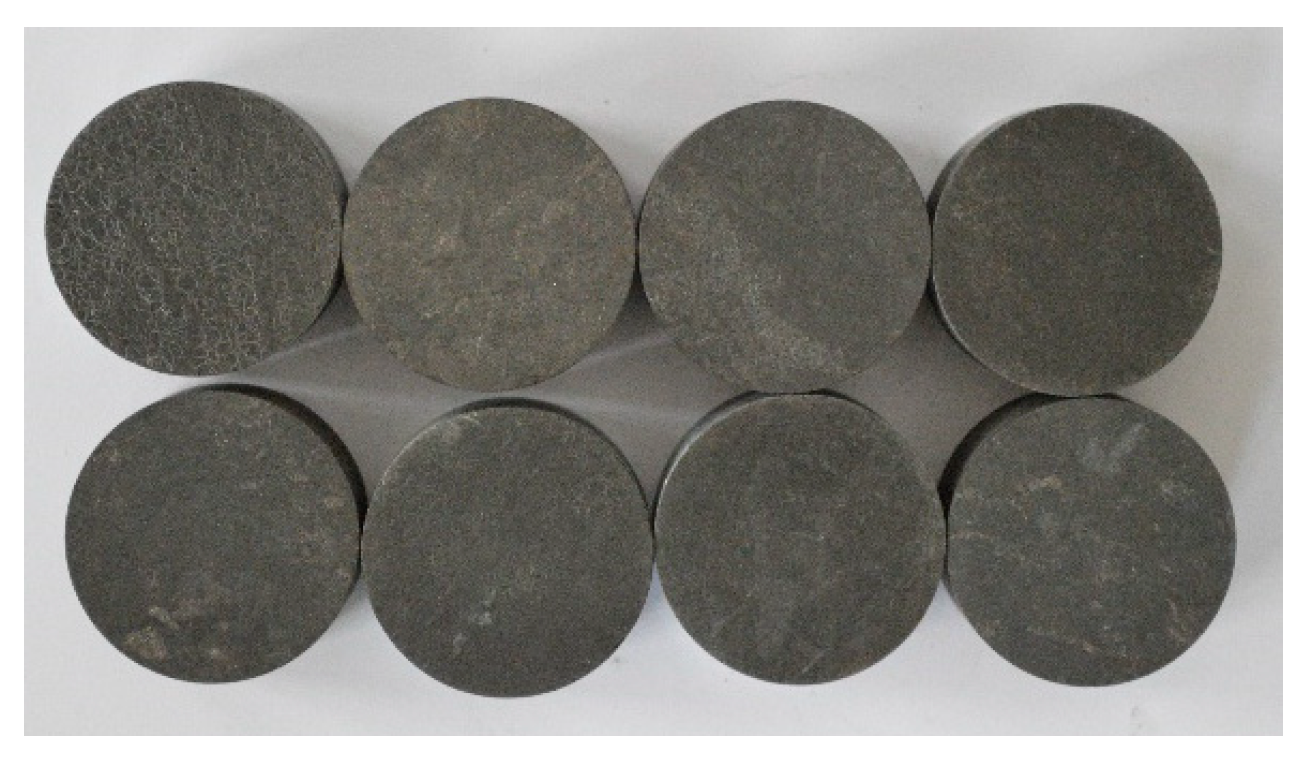
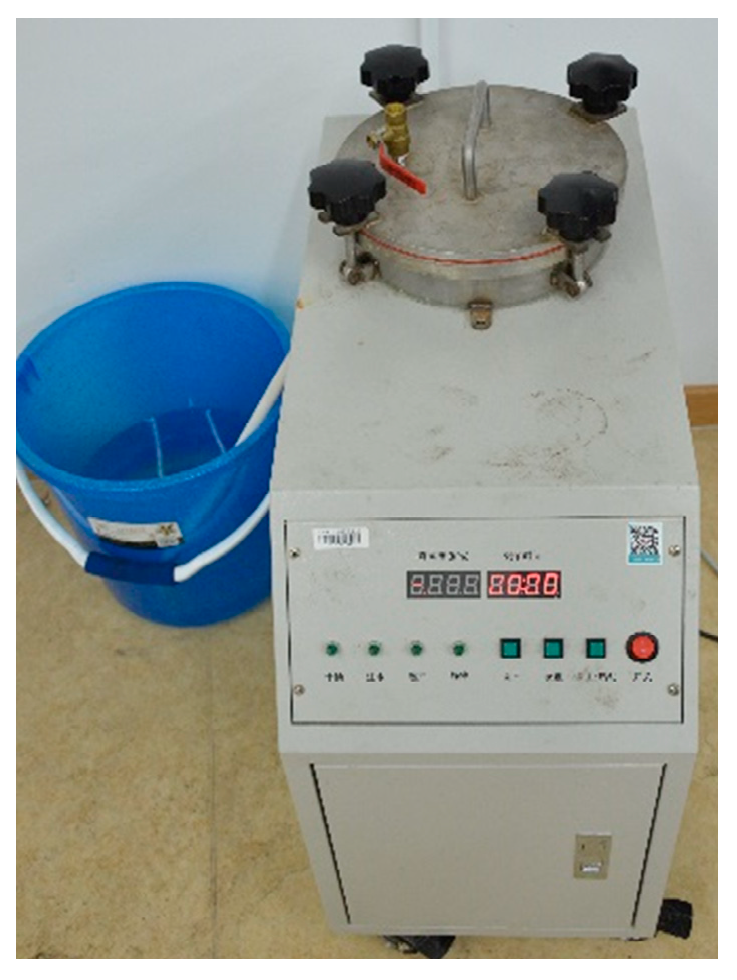
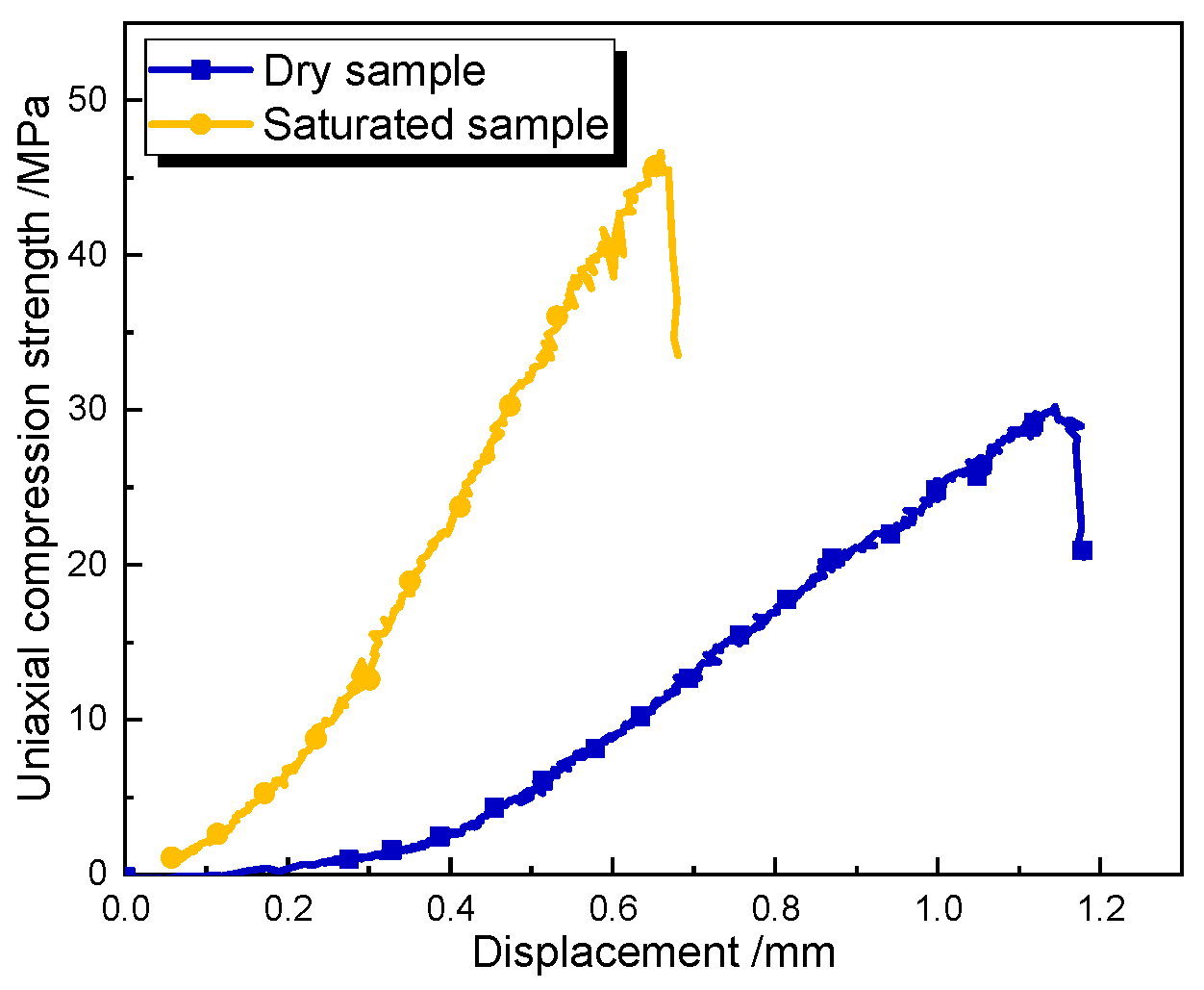


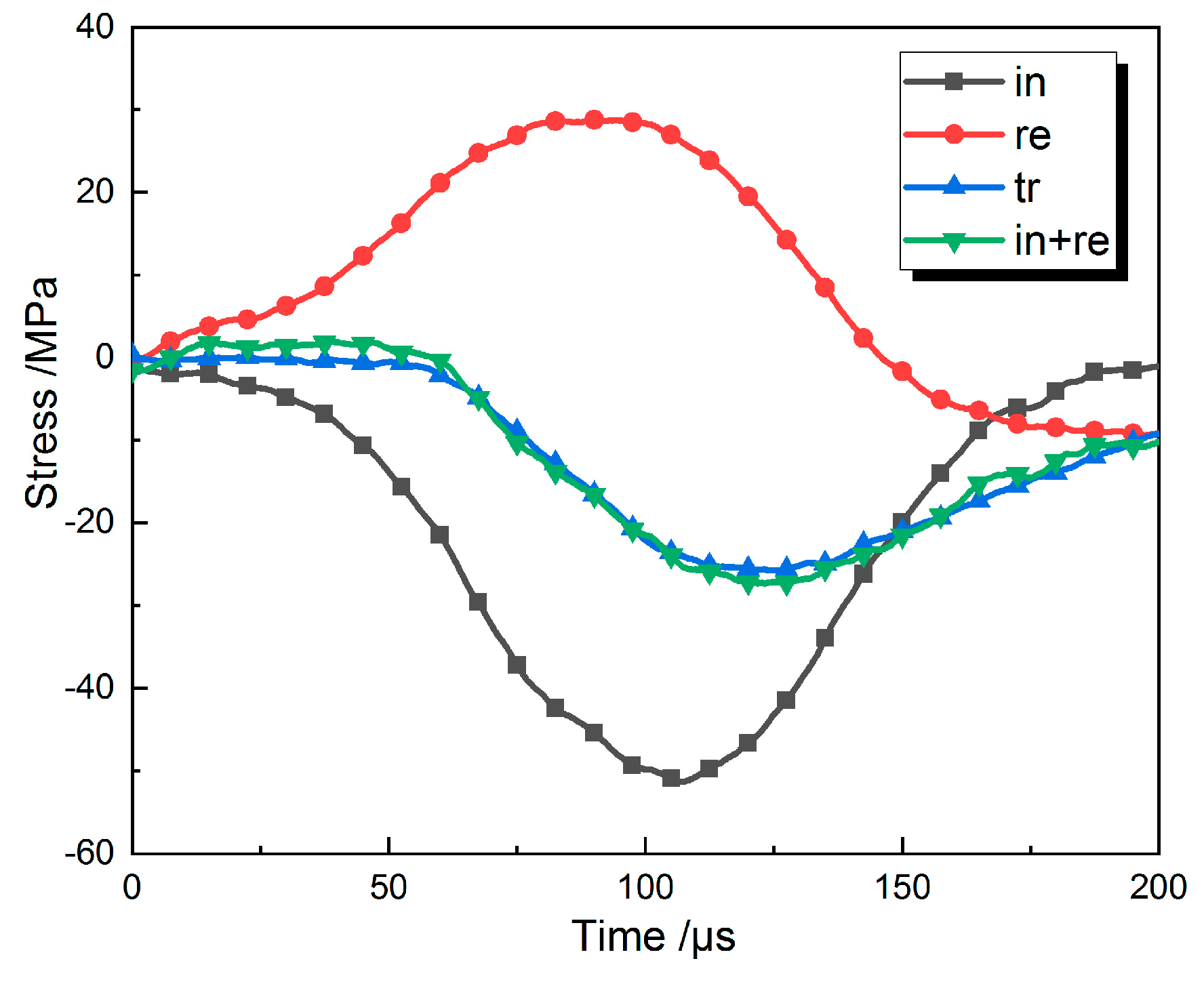
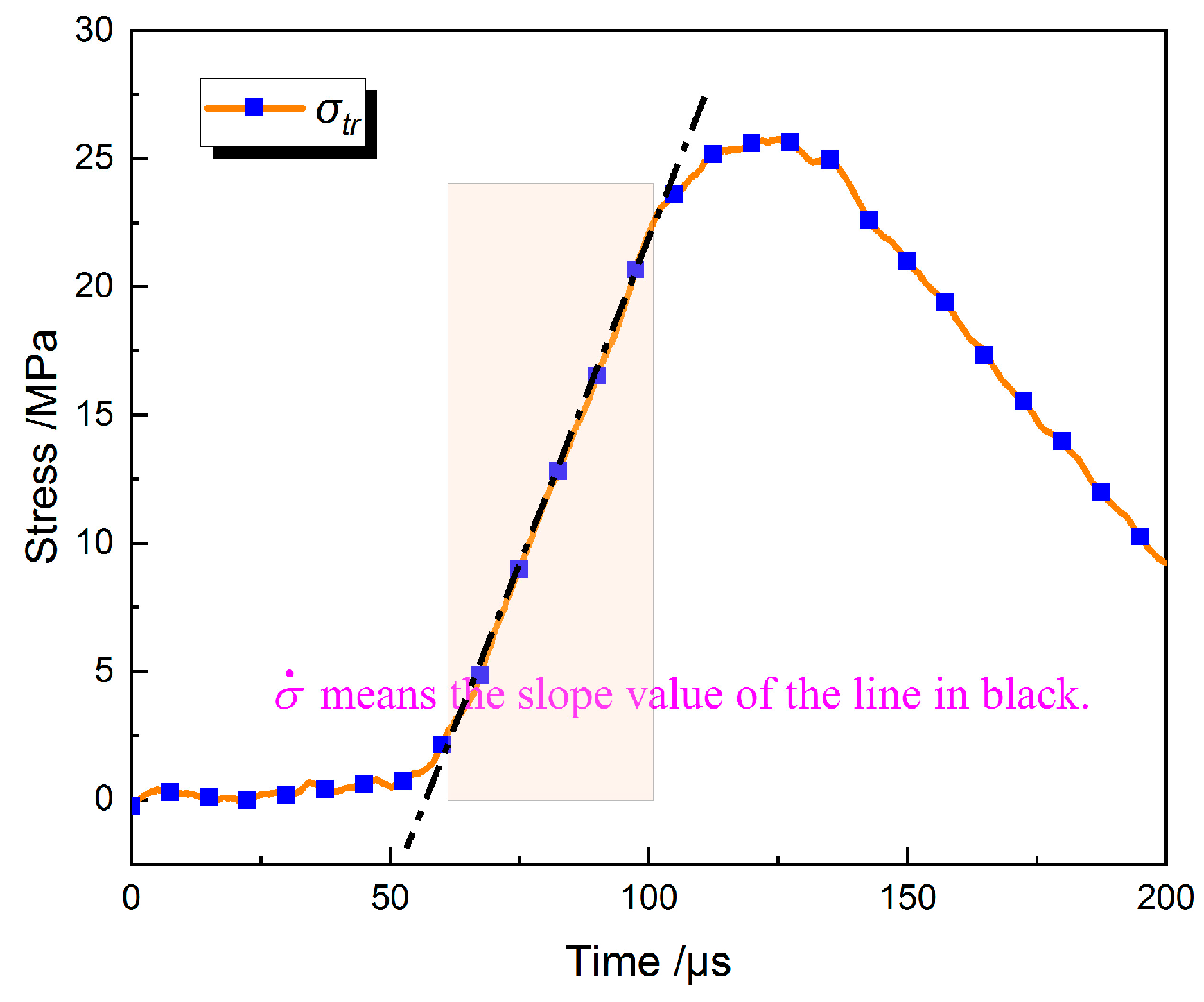
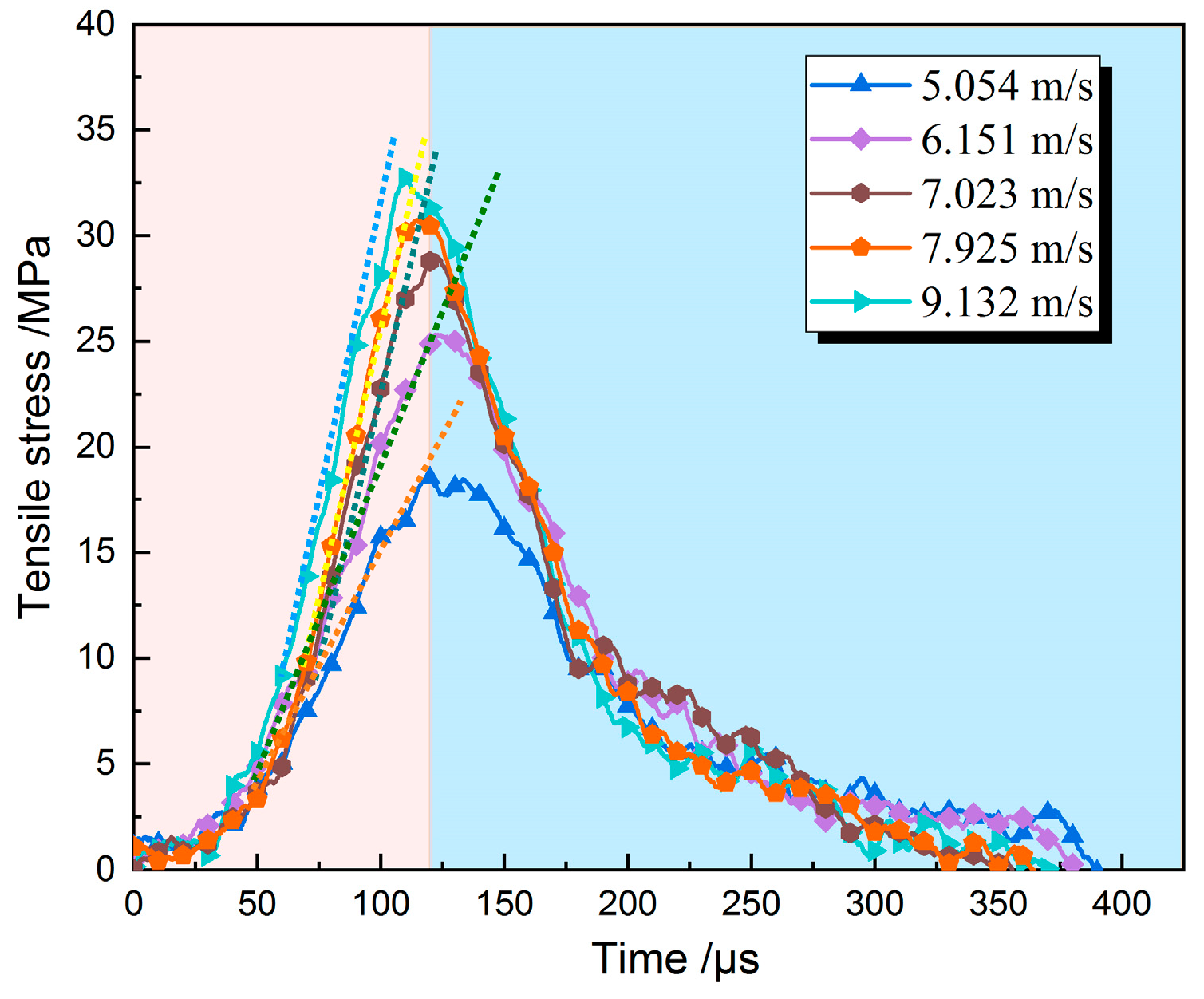
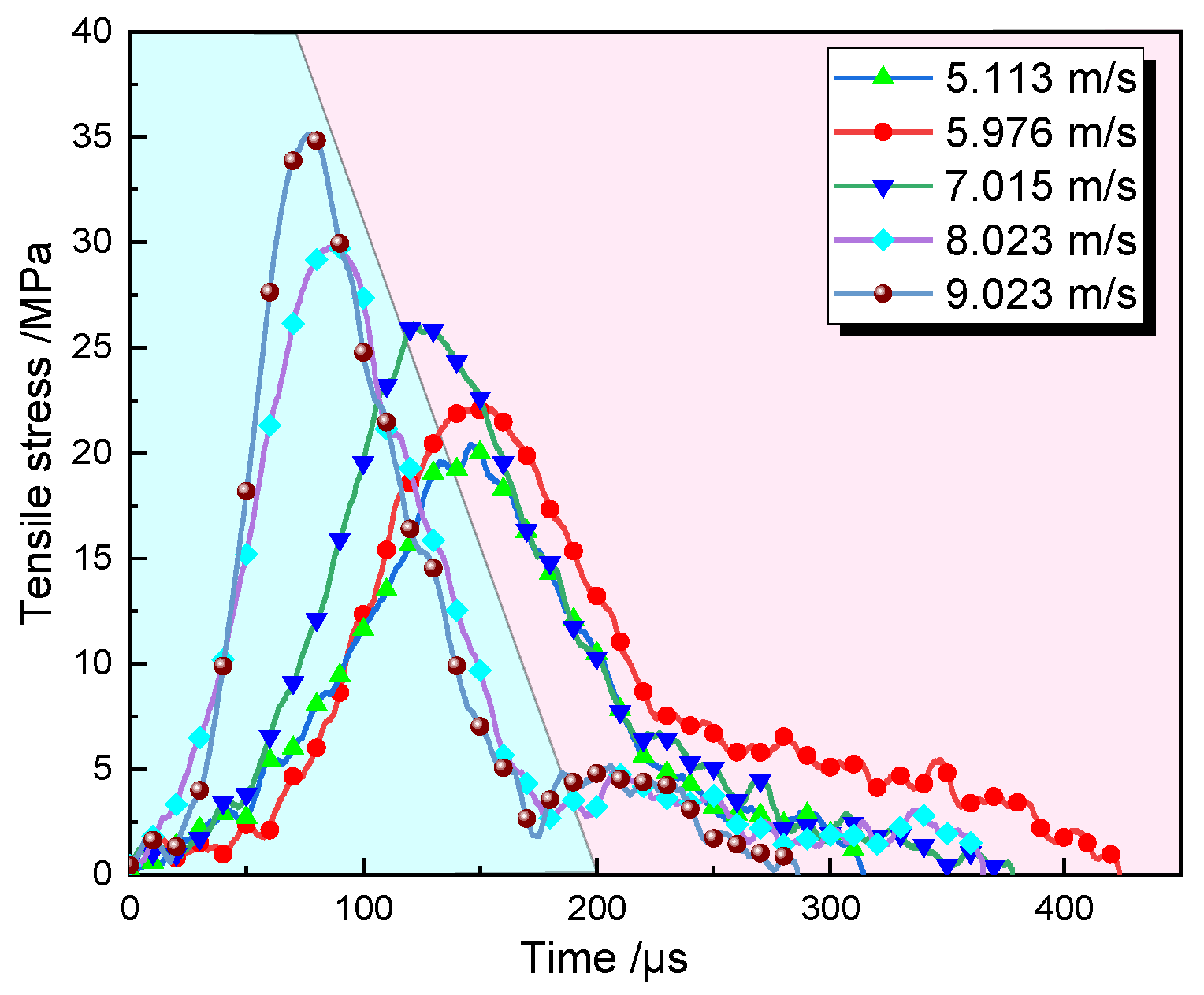

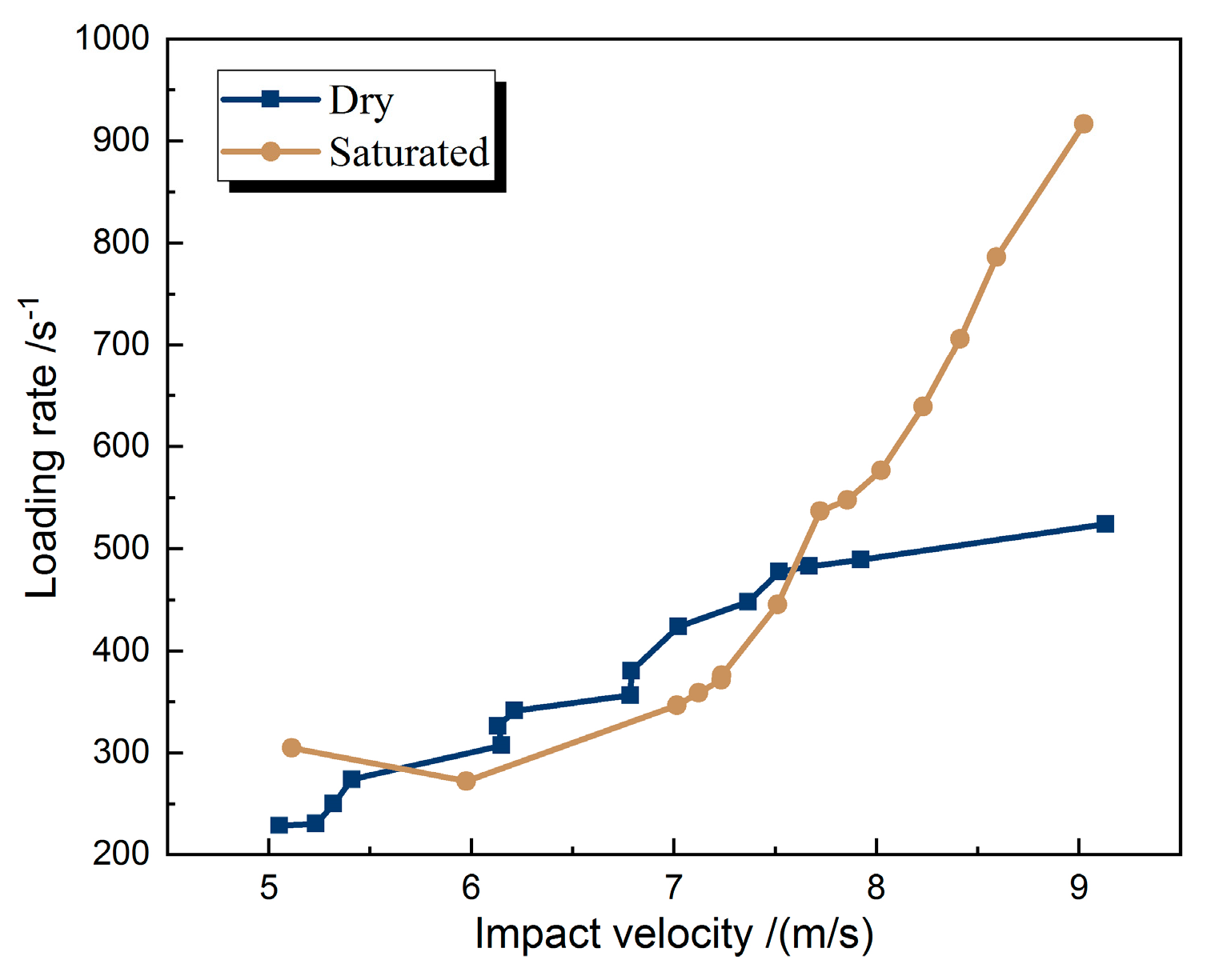
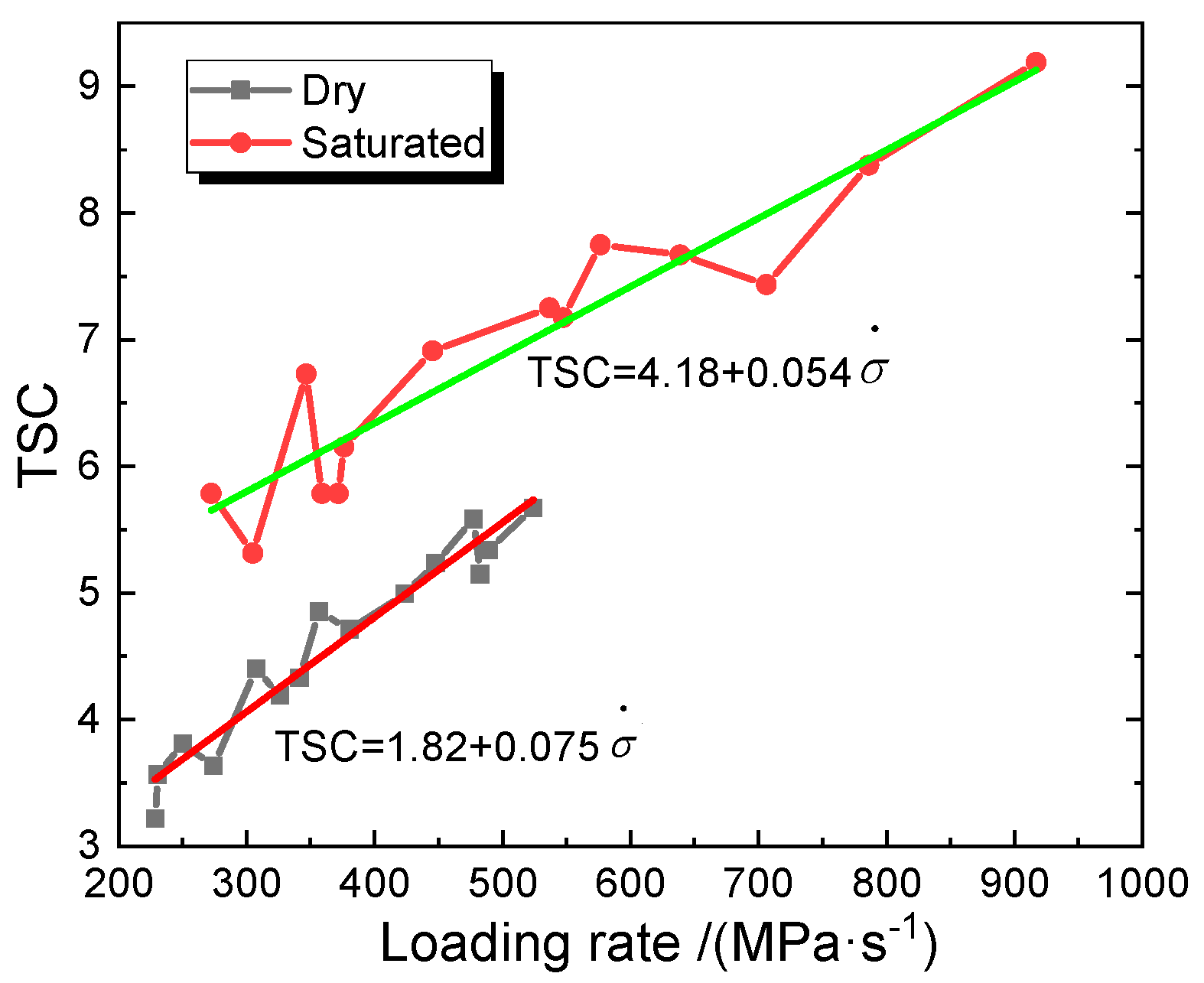
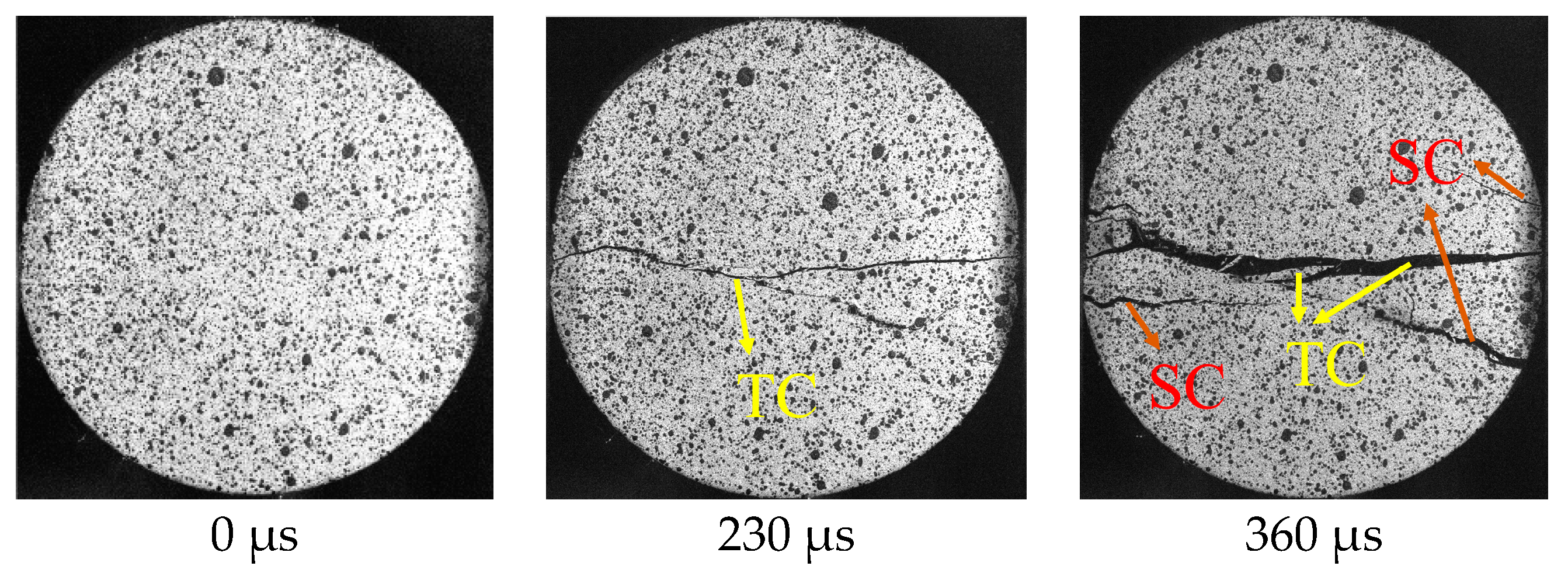
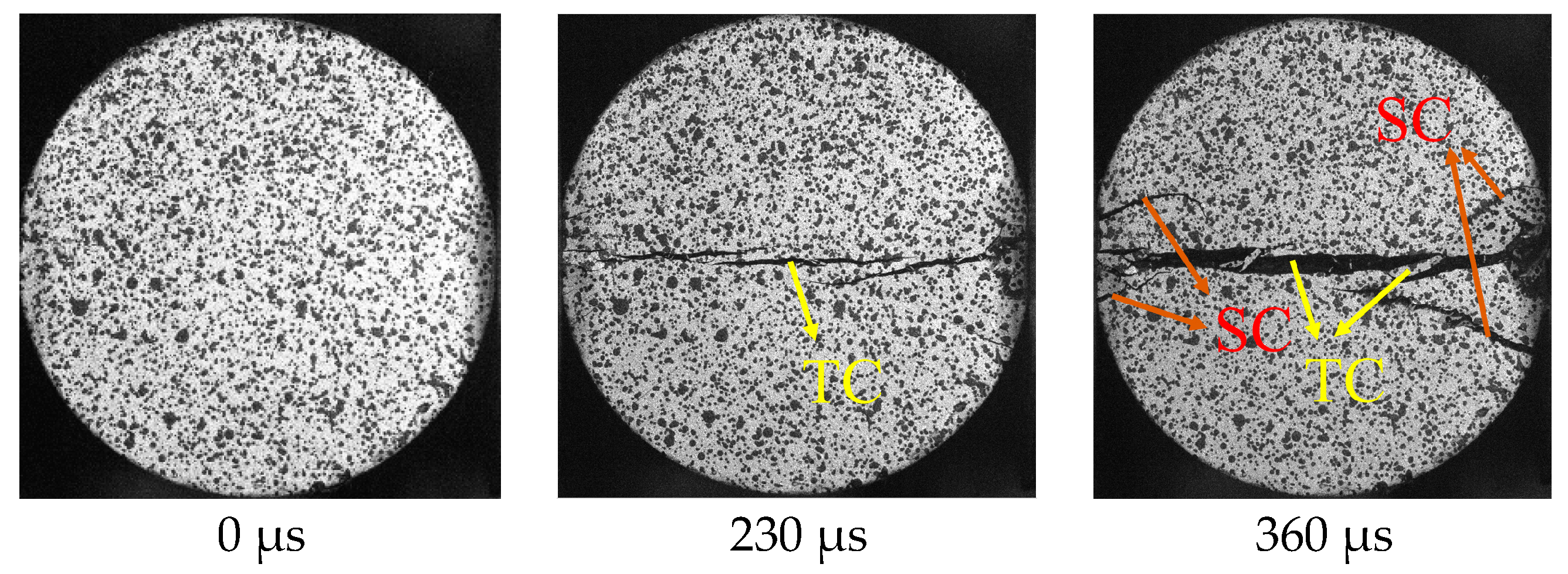
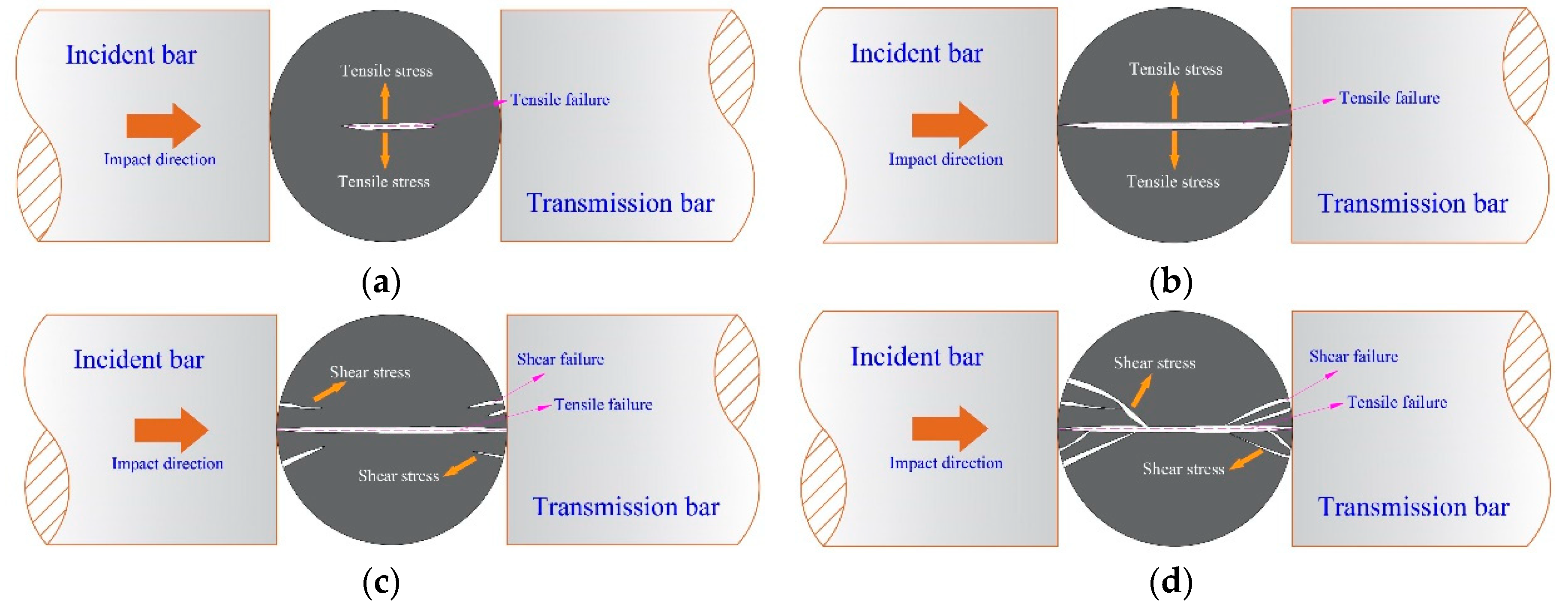
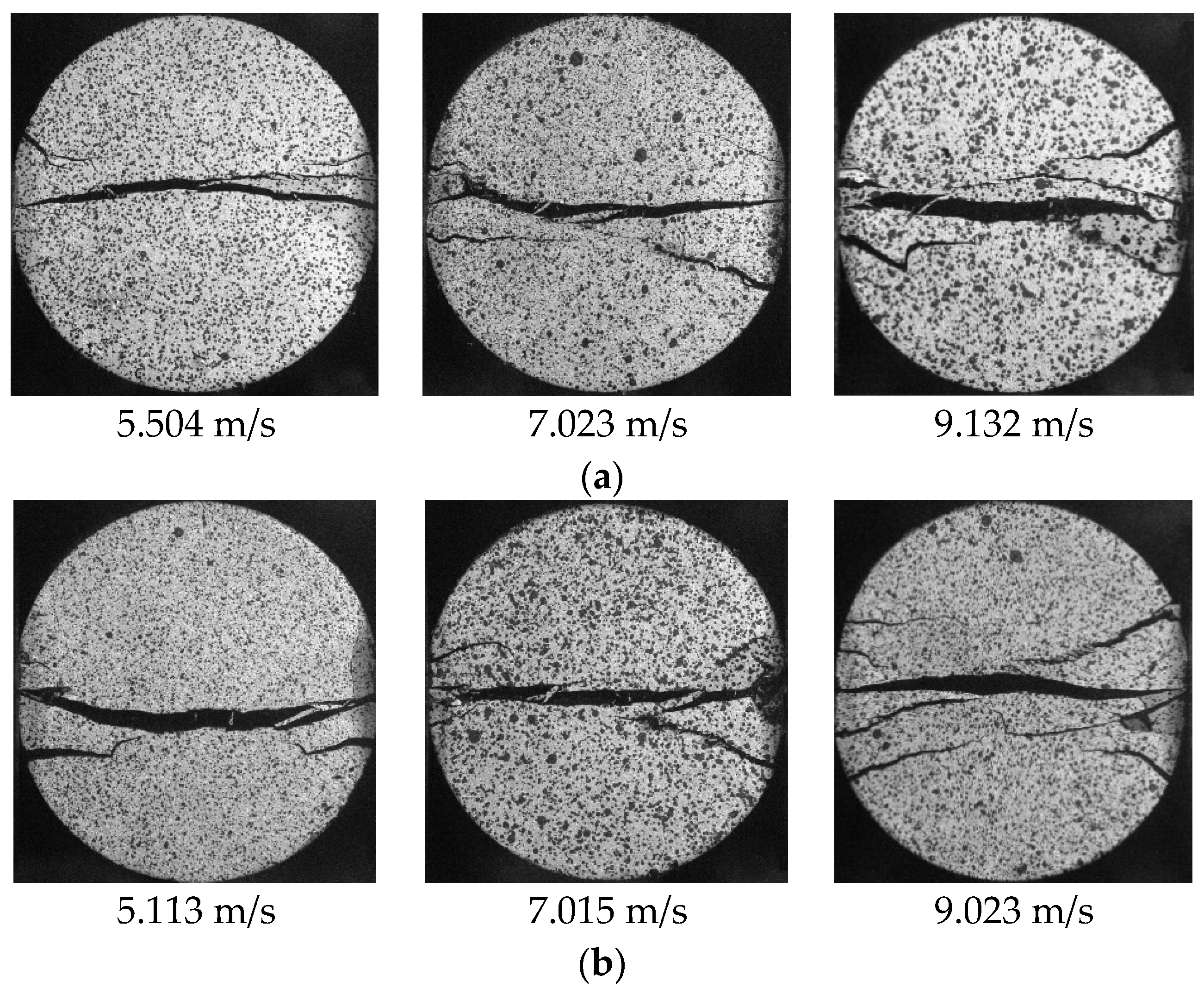
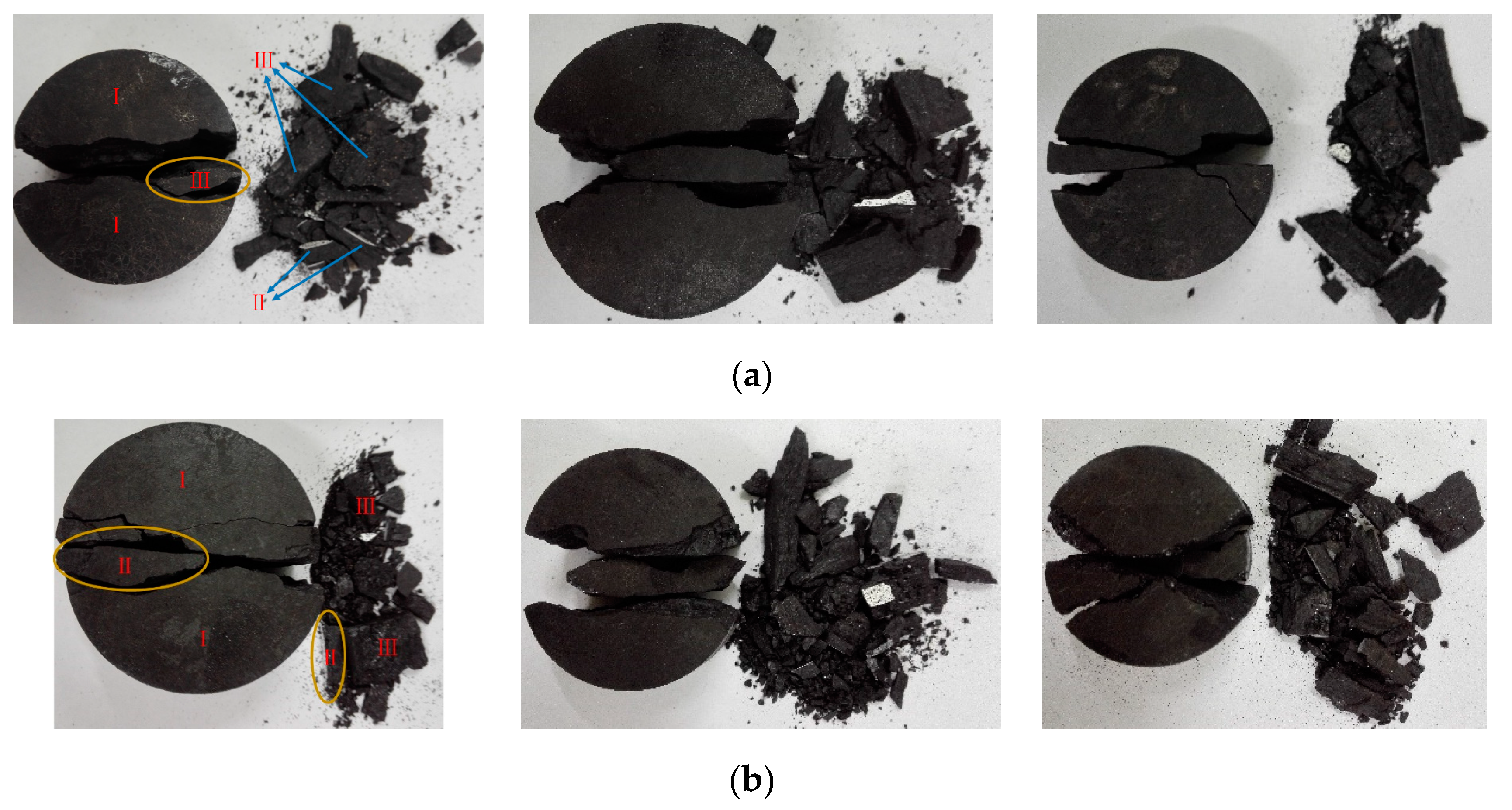
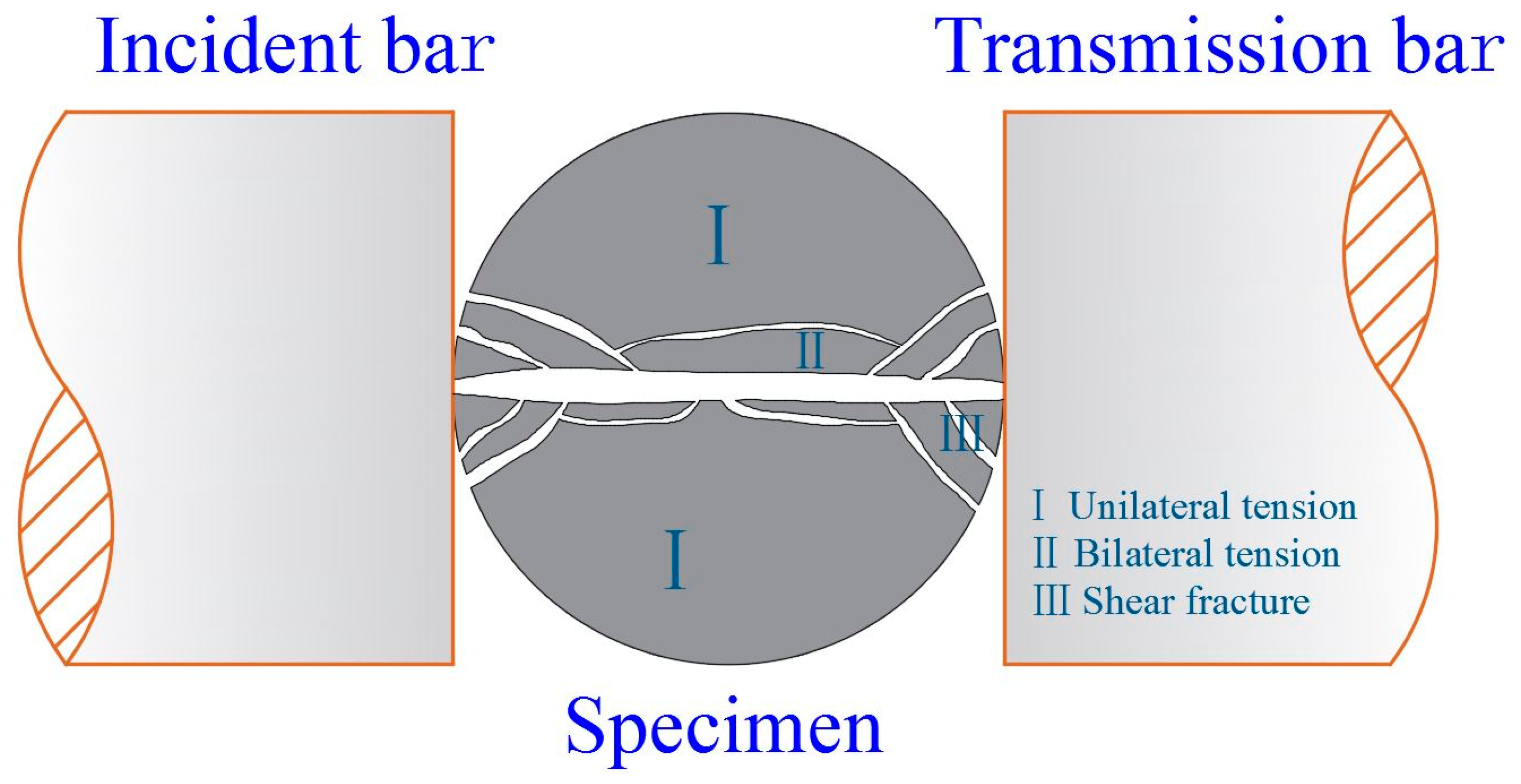
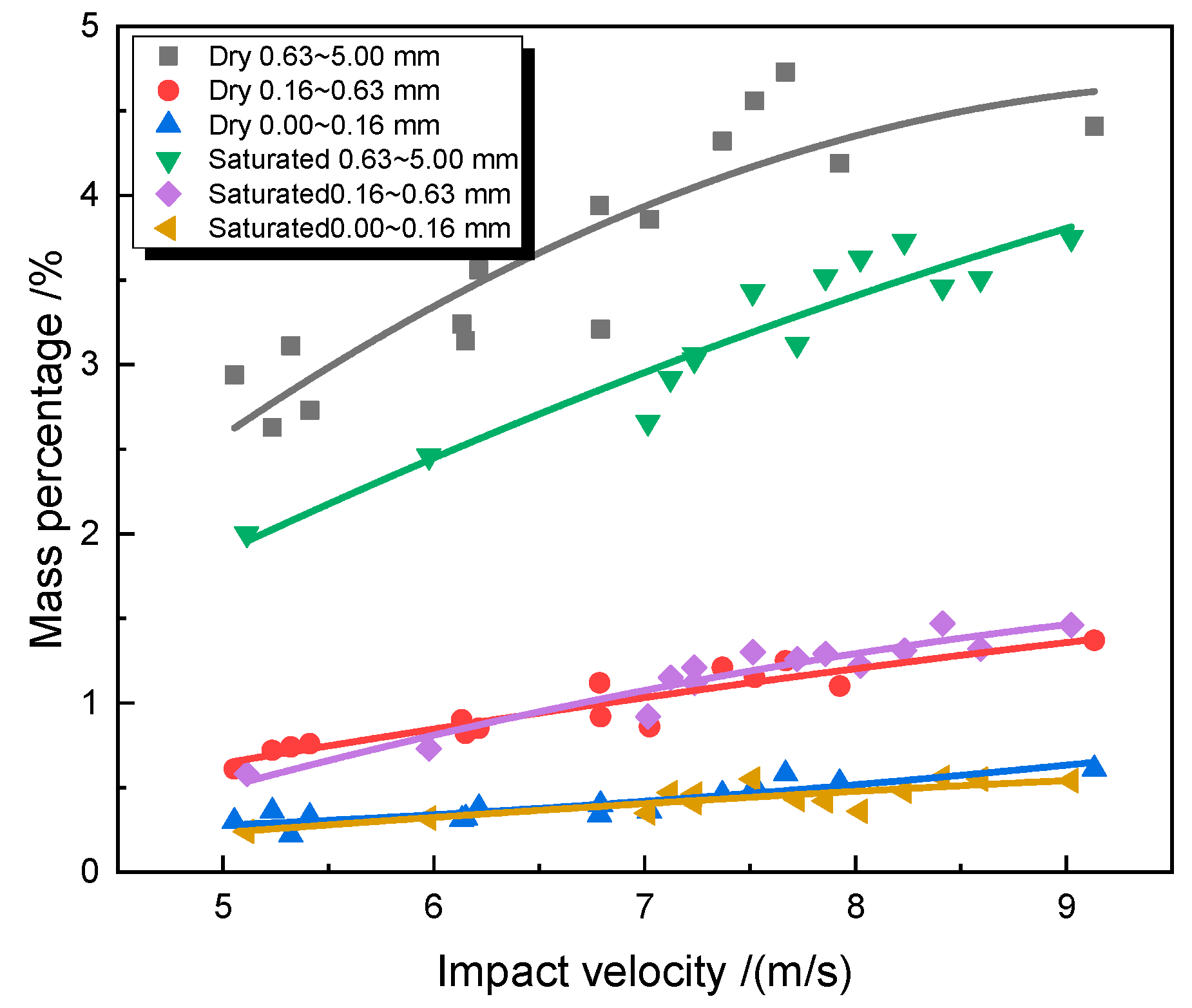
© 2020 by the authors. Licensee MDPI, Basel, Switzerland. This article is an open access article distributed under the terms and conditions of the Creative Commons Attribution (CC BY) license (http://creativecommons.org/licenses/by/4.0/).
Share and Cite
Zhu, X.; Li, Q.; Wei, G.; Fang, S. Dynamic Tensile Strength of Dry and Saturated Hard Coal under Impact Loading. Energies 2020, 13, 1273. https://doi.org/10.3390/en13051273
Zhu X, Li Q, Wei G, Fang S. Dynamic Tensile Strength of Dry and Saturated Hard Coal under Impact Loading. Energies. 2020; 13(5):1273. https://doi.org/10.3390/en13051273
Chicago/Turabian StyleZhu, Xianlei, Qing Li, Guihua Wei, and Shizheng Fang. 2020. "Dynamic Tensile Strength of Dry and Saturated Hard Coal under Impact Loading" Energies 13, no. 5: 1273. https://doi.org/10.3390/en13051273
APA StyleZhu, X., Li, Q., Wei, G., & Fang, S. (2020). Dynamic Tensile Strength of Dry and Saturated Hard Coal under Impact Loading. Energies, 13(5), 1273. https://doi.org/10.3390/en13051273




